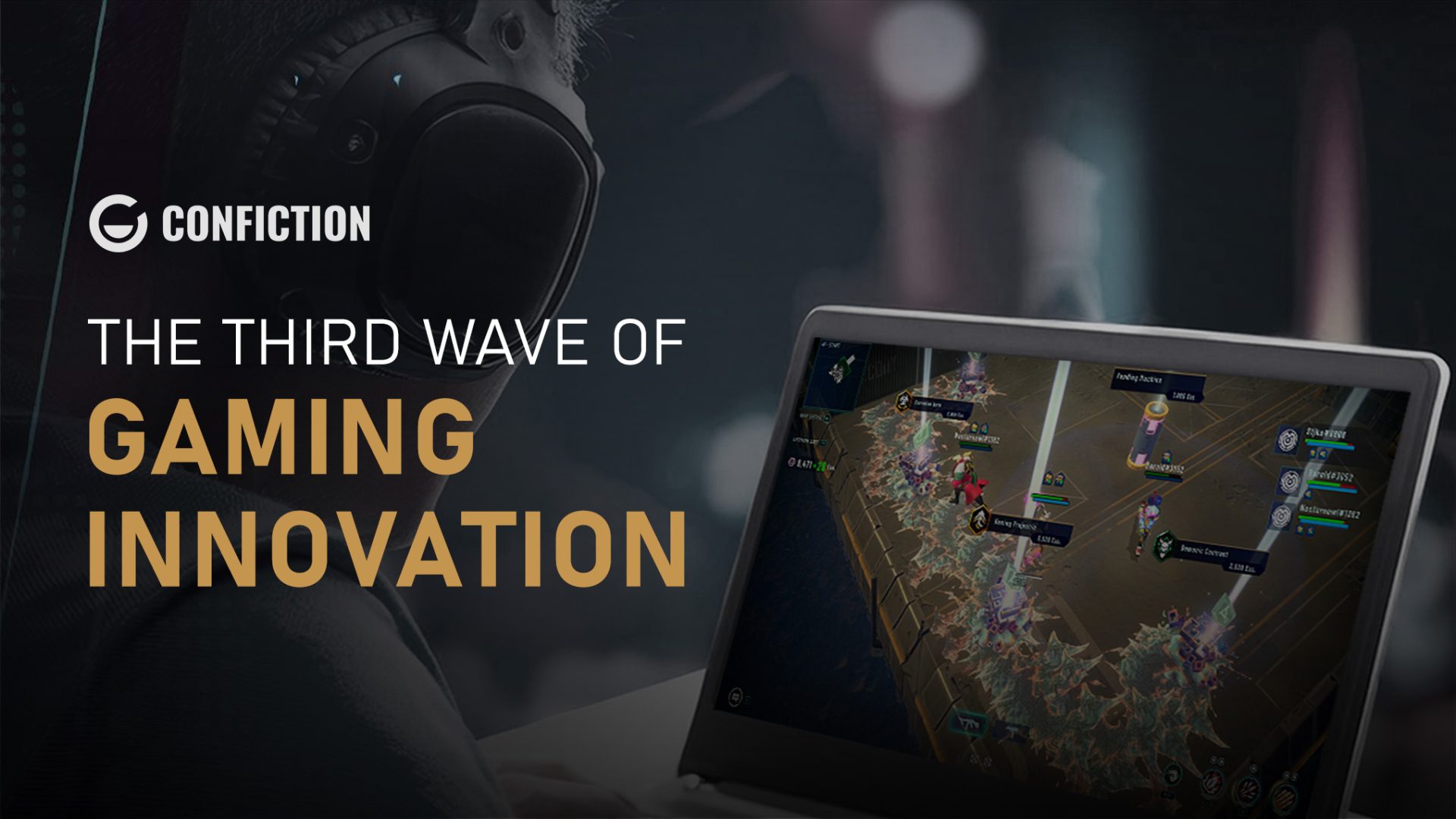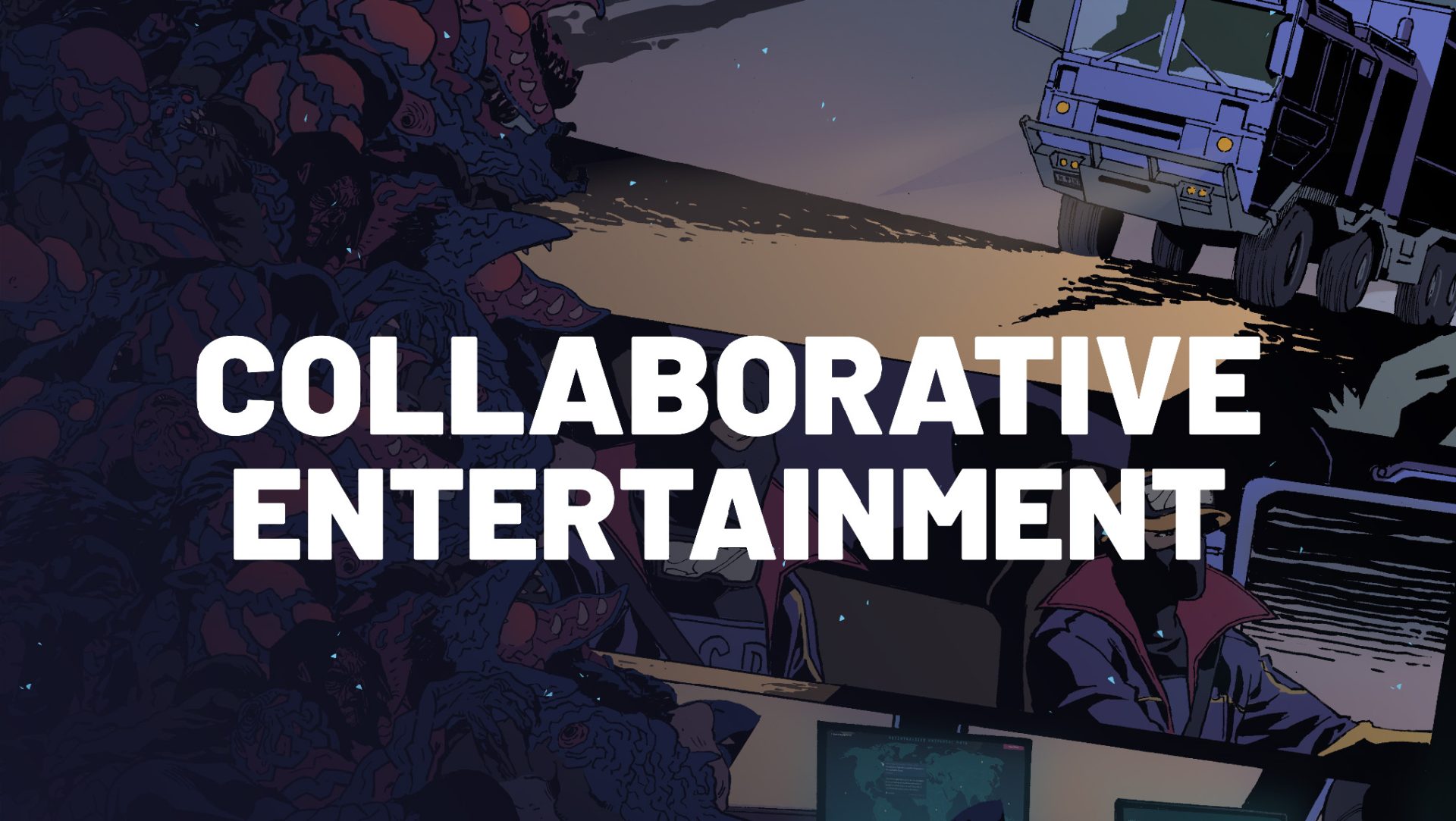
Video games have been the product of technological breakthroughs, evolving over decades. While games weren’t the goal in mind when the precursor technologies were invented, their eventual discovery and integration into society have done so much to help enrich our lives. To date, gaming is the biggest industry in all of entertainment, with almost US$200 billion in revenue generated in 2023. We’ve seen games level up from physical cassettes and discs to digital downloads, online interconnectivity, and high-speed updates.
While games have improved in many aspects over the years, these were mainly upgrades of existing systems — better graphics, faster speeds and access to different mechanics, to name a few. Confiction Labs believes that gaming is on the cusp of moving onto the next stage with a new wave of innovation. Just as technology of the past evolved games into what they are today, we are at the precipice of developments that could rapidly change how we see the world and, in turn, how we see games.
Technology Is Always Looking for a Problem to Solve
The efforts to advance technology often come from the discovery of needs, wants or gaps in our collective lifestyle. While new inventions come to solve that challenge, they often surpass their goal and affect many other industries. The steam engine not only made land transportation via trains possible, but it also opened the door for aircraft, cars and faster boats. Engines would also lead to air conditioners, refrigerators and large-scale industrial factories.
Technology often comes in waves. A major breakthrough occurs, and society shifts as a result. When people realized that coal could be used as fuel, the first engines were created, leading to the industrial age. When transistors were discovered, the world began shifting into the information age, or digital age. The byproduct of these shifts would last for decades as the potential of new technology was explored. New discoveries would then occur, and the cycle repeats itself.
Gaming follows a very similar route. New technology comes in and games adopt it to further enhance the entertainment experience. In 1968, the first head-mounted virtual display was created, leading to the development of what we know today as virtual reality. When looking at gaming from a top-down perspective, there have been two major waves of gaming innovation.
The First Wave: Semiconductors and the Birth of Video Gaming

Semiconductors are the core of electronics. Without it, we wouldn’t be able to enjoy the many things we have today, like computers or appliances. The first semiconductor effect was observed by Michael Faraday in 1833, when he found that lower temperatures lowered electrical resistance, allowing current to flow faster. This fast flow of electricity allowed lights, machines and devices throughout an area to be powered concurrently. Further developments in semiconductors resulted in the transistor in 1947, which would allow control over electrical current flow, opening the door for the invention of the computer.
Previously, computational devices were analog or mechanical, but with the power of electricity, machines were able to compute exceedingly fast, analyzing and translating information faster than humans. The first computers were large and complicated, with basic machine language. Over time, they became more compact, sophisticated and powerful. In 1958, William Higinbotham used a computer to create what he called Tennis for Two, which would be the precursor to the first widespread video game two decades later, Pong.
Before Pong, people had no idea that they could interact with electronic devices for entertainment, and many fell in love with video games. By the early 1980s, arcades were taking over, generating US$5 billion in annual revenue. Games like Pac-Man, Space Invaders, and Donkey Kong were hits around the world. At that time, the Atari 2600 was taking over the industry, introducing the idea of consoles, leading to the Nintendo Entertainment System (NES), the Sega Genesis and the PlayStation.
Semiconductors would ultimately become the foundation for what would be the digital era, and it would help transition humanity into a new lifestyle of computers, microchips and electronics. As computer parts like processors and memory chips improved, so did gaming.
The Second Wave: Mobile Computing Expands Gaming Borders
As computers started to evolve and games were making headlines through arcades, scientists, engineers and inventors were already busy solving the next problems. During the 1980s, several concepts began developing at the same time, leading to what would become the next era of technology:
- The concept of a portable computer was something that was being developed by several companies, with numerous iterations leading to what we know now as the laptop.
- Developments for a network where computers would communicate with one another established a communications protocol called the Transfer Control Protocol/Internet Protocol (TCP/IP), giving birth to the internet.
- Countries like the US, Netherlands and Australia began work on wireless communication systems, which eventually led to Wi-Fi.
These developments would open the door for other mobile computing technologies, such as Bluetooth, SMS, smartphones, and later, cloud computing.
At the point when mobile computing was gaining popularity during the 1990s, gaming had a premium model. People had to buy discs or cartridges from stores. When a game was released with bugs or mistakes, there was no going back. Eventually, mobile computing made it possible for developers to patch games and update them, leading to the popularity of MMORPGs and live service games.
Mobile computing would later unlock the next gaming revolution: free-to-play (F2P). In the late 1990s and early 2000s, companies began experimenting with free games, earning profits by offering premiums such as in-game items and cosmetics that could only be bought with real cash. Games such as Neopets, RuneScape and MapleStory became hugely popular because of their accessibility. Countries like South Korea, Russia and China were among the first countries where F2P overtook the markets.
F2P was hugely profitable, and the West soon followed suit, with games such as Team Fortress 2, League of Legends, and Dota 2 becoming among the most popular in history. Now, online games, live service games and free-to-play games have become part of the norm, and we can buy a game digitally and download it instead of going to the store.
Collaborative Entertainment in Web3 Gaming Is the Next Step

Collaborative Entertainment solves several challenges in gaming. For one, incentivization has always been a big question mark in the gaming industry, mainly because there are so many legal complications surrounding it. A lot of fans have amazing ideas, as seen in mods, Reddit posts, or even fanart. Even if a developer would want to adopt those ideas, it’s hard to attribute to the original creator and even harder to incentivize them as it would have to go through lengthy processes, complicated contracts, and other challenges.
The big quality that blockchain presents is its immutability. Because of the way it’s designed, it’s nearly impossible to alter or change the information logged into a blockchain. Even if one could have the means to unravel its advanced encryption, the time, energy and effort to do so would far outweigh the changes one could make.
With blockchain, developers will be able to pinpoint contributors through a chain’s immutable ledger, and it would be easier to attribute and incentivize them. Blockchain creates a sense of permanence for the apps, platforms and games built on it. These chains are also transparent and open for everyone to see. You can track a wallet’s transactions, activities and achievements. Combine all these and you have a secure foundational technology in which transactions can be trusted because they can be publicly verified.
With gamers becoming active contributors and producers, developers no longer need to be bound by predatory or profit-minded tactics. A developer can create a marketplace where they can take small percentages of profits from transactions. They can ask for support from their fans by selling them NFTs, which the fans can buy to hold or sell in the market when they want. CE also gives an entire player base the ability to bring their ideas forward, unlocking creative possibilities for games.
Collaborative Entertainment in Riftstorm
In Confiction Labs’ action RPG Riftstorm, players will be able to shape the world around them. Their actions can change the world for better or for worse, as seen in Flashpoint events. They can submit their stories, concepts and ideas, and these can all become canon. If they have an idea that the team wants to implement, then it may play a big part in Riftstorm’s future updates.
Collaborative Entertainment is possible because of AI and web3. Riftstorm’s repository of UGC can be organized and vetted with the help of an AI-powered protocol called the ConFict Data Layer (CDL). Then, as the contribution becomes a part of the game, attribution and incentivization are made easy with everything logged onchain.
One of the big things that CE opens up is creativity. More often than not, long-running game franchises take a turn for the worse because developers are out of touch with what the fanbase wants. Other times, a reboot or a remake becomes necessary to help breathe new life into a series. With CE, developers now have a multitude of ideas they can implement, all coming from a passionate player base that’s interested in making their game better. Riftstorm is set to introduce an entirely new paradigm in gaming that will define how we enjoy our games moving forward.
Riftstorm is currently under development. Learn more about it here, and visit the Steam page and the official website. You can also follow Confiction Labs and Riftstorm on X for the latest updates.
Learn more about Collaborative Entertainment here.
Learn more about Confiction Labs here.

